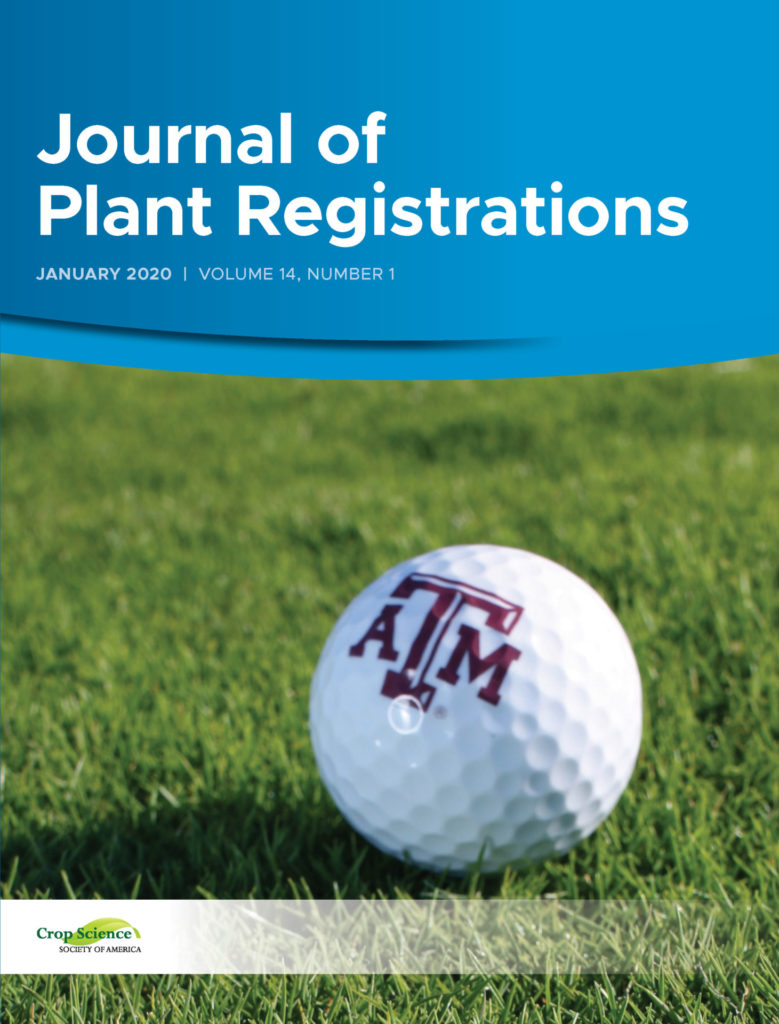Texas A&M AgriLife Research breeds viable zoysia grass for putting greens
Variety outperforms existing market zoysia grasses
The latest turfgrass variety in a recent string of releases by Texas A&M AgriLife Research breaks new ground among market zoysia grasses, especially in its viability for golf course putting greens.
“Zoysias have typically not been considered for widespread use on putting greens,” said Ambika Chandra, Ph.D., AgriLife Research professor and turfgrass breeding program lead in Dallas. “This variety marks a very big stride in the viability of zoysia grasses for this application.”
The latest issue of the Journal of Plant Registrations documents these advances in its cover publication, which reviews merits of the new variety, developed as DALZ 1308. It will be marketed and sold, however, under the brand name Lazer Zoysia Grass.
The new variety is a first-generation hybrid developed by crossing the species Zoysia minima and Zoysia matrella. The result is an “ultradwarf” turfgrass well-suited for golf course putting greens in a wide range of environments across the U.S., including the difficult transition zone in the central part of the country.
Superior quality playing surface
Lazer Zoysia Grass produces narrower and shorter leaf blades as well as a shorter “dwarf” canopy compared to Diamond. Diamond was formerly the finest-leaf producer available on the zoysia market. It was also developed by AgriLife Research.
In research trials, Lazer displayed resistance to tawny mole crickets as well as having lower seed-head production as compared to Diamond during the growing season. Shoot density is also higher, and the turfgrass retains its medium‐green genetic color longer into fall and winter.
Greenhouse experimentation so far shows Lazer has a higher percentage of green coverage as compared to Palisades, Diamond and Zorro varieties of zoysia grasses under moderate shade conditions.
Lazer attributes also contribute to a superior ball roll as compared to Diamond Zoysia studied in Arizona, Kentucky and Texas, according to trials under the 2013 National Turfgrass Evaluation Program for warm-season turfgrasses. The trials included 10 locations across the U.S. including the Texas A&M AgriLife Center at Dallas.
Track record of innovation
Lazer joins Innovation Zoysia Grass as the latest AgriLife Research offering. The process for a variety release can take as many as 15 years.
“We’ve worked more than a decade on each of the new releases,” Chandra said. “Each one represents a great achievement and many hours of work by an extremely talented group of researchers.”
Chandra’s team has worked since 2007 to produce new varieties, continuing the work of a turfgrass program in operation since the 1980s. Chandra’s team efforts take place as a growing 85% of Texans, as well as people across the globe, now reside in cities. At the same time, turfgrass covers as much as 60% of any city’s landscape, making it the largest agricultural crop grown in any urban area.
Breeding for resource efficiency
In addition to breaking new ground in zoysia grass, Chandra’s team is a pioneer in new techniques for St. Augustine grass development.
Next-generation St. Augustine grass hybrids developed by the Dallas turfgrass program employ the new techniques to create potential for a 60% to 80% reduction in landscape water-use compared to “diploid” St. Augustine grasses — those with two sets of chromosomes. The Dallas hybrids are the first viable crosses between diploid and polyploid – more than two chromosome sets – St. Augustines.
Furthermore, in the first use of its kind for turfgrass production, the team employed embryo-rescue technology — caring for hybrid turfgrass embryos in controlled environments to ensure establishment of new turfgrass lines.
“These embryo rescue-derived hybrids are currently being tested by Texas sod growers for sod production characteristics,” Chandra said. “Our consumers and end-users will benefit tremendously from water and associated cost savings as these hybrids reach the market.”
Diversity delivers
Genetic diversity available through the Dallas Center’s turfgrass germplasm collection of more than 700 accessions — one of the largest in the world — opens doors to hundreds of thousands of potential crosses.
This capability has allowed Chandra’s team to challenge the geographic boundaries of zoysia grass with emerging varieties. For example, the new Innovation Zoysiagrass — a Z. japonica and Z. matrella hybrid — brings finer leaf texture and superior density to northern golf courses as well as commercial and residential landscapes. Like Lazer, it performs well in the challenging U.S. transition zone.
At the same time, the team’s expansive germplasm collection allows for exploration into new uses for fine-texture and under-utilized zoysia grass species, including Z. minima in breeding Lazer.
Drops in the bucket: Looking forward
Climate-resilient, resource-efficient, interspecific hybrids of zoysia grass, as well as embryo-rescue derived hybrids of St. Augustine grass developed at Dallas, significantly reduce use of water and pesticides.
“And we will continue to breed better and higher quality varieties,” Chandra said. “As we meet market demands for these improvements, we’ll also work with the Texas A&M AgriLife Extension Service to spur wide adoption.
“That means continued reductions in water and pesticide use over time, an offsetting of maintenance requirements and increased environmental and economic sustainability of turfgrass as an agricultural product.”
Lazer Zoysia Grass will be available for purchase from Blade Runner Farms of San Antonio. Innovation Zoysia Grass is available from Sod Solutions. The varieties are sold as sod or plugs.



